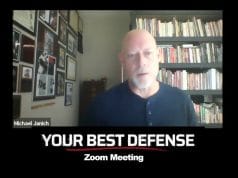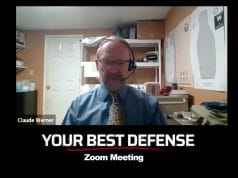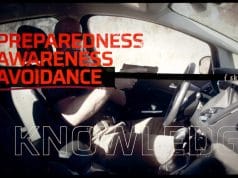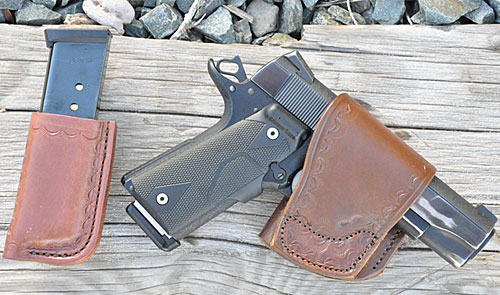
What’s the best pistol for personal defense? How accurate must it be? How reliable should it be? These are the questions I’m asked most frequently in class, on-line and in person, so let’s go through them.
What’s The Best Pistol?
Clearly, the best pistol is the one you have with you should you need to defend yourself or your family. Having a pistol at hand is far more important than considerations like caliber or action type. Choosing a pistol is personal and the pistol you choose may not be the one I would pick. There is no “one gun” and my telling you there is, because it works for me, is worthless advice. In general, you should choose the pistol that fits your hand and is the right size for your intended purpose. Training range pistols may not be suitable for concealed carry and you might not want to use a mini-pistol during an intense week long training class. Modern defensive ammunition, regardless of caliber, is designed to perform similarly in terms of penetration and expansion, so don’t get hung up on the caliber debate. All will do if you can get the hits.
After choosing a pistol that fits your hand and intended purposes, shoot it and see how it feels to you. You will probably find the larger pistols are more comfortable and the little ones are not. If a little pistol bites back when you shoot it you’re not going to practice with it, and if you don’t practice you’re going to lack confidence in your ability to get fight-stopping hits. Most of us shoot larger pistols in training and carry smaller pistols because they are easier to conceal.
How Accurate Should It Be?

Due to target shooting sports we seem to be obsessed with shooting groups – tiny clusters of holes in a target. For defensive shooting purposes we don’t need this level of precision but we do need to place rounds in the vital zone of a bad guy in a hurry. In my experience, modern handguns are more accurate than most of us can appreciate. In other words, they shoot better than we do, so our concern should be how we interface with the pistol. The fit of the pistol in our hand, the way we see the sights and how easy or hard it is to press the trigger directly relate to how well we can shoot the pistol and make our hits. My personal accuracy standard is this: The pistol, sights, trigger and ammunition need to work with me well enough to be able to make head shots at 25 yards. The head shot target I usually use is 6” X 6”. If I can consistently keep my shots in that box, the pistol and I are working well together.
Why, you might ask, should I insist on an accuracy standard at 25 yards when we all know defensive shootings occur at 3 yards or less? While it may be true that many shootings occur at close range – perhaps the distance across a room or closer – it’s also true that shootings occur at longer ranges. For example, did you know the average range for a Border Patrol shooting is 40-something yards? This past year a man assisted a pinned down police officer engaged in a rifle shoot-out by using his .357 Magnum revolver to drop the bad guy at about 100 yards. I think having a pistol that will deliver, and the skills to get hits at ranges beyond a few yards, instills confidence.
Handgun Reliability
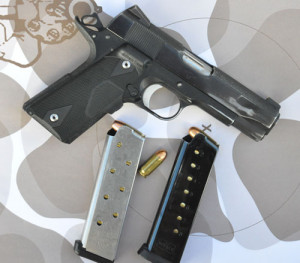
If you ask shooters how to measure reliability they will often suggest a 1,000, 5,000 or 10,000 round test. Although this may sound good it is very expensive and time consuming. Governments can afford this sort of thing but most of us looking for a reliable pistol can’t consider it. If a pistol makes it 10,000 rounds, how many malfunctions or stoppages are acceptable? How do you know it will fire round number 10,001? Does the performance of one pistol tell us anything about the rest? If Blaster 500 #101 makes it through our test can we be assured that all the other Blaster 500s will? Also consider, most pistols will never be fired 1,000 times, much less 10,000. Still, if passing a torture test is important to you, look up tests done by police departments, federal agencies and the military and choose a pistol that has passed this testing (your research will also reveal guns that failed to meet the standard).
Watching pistols go through training classes, I’ve found most will go through several hundred rounds before needing a little oil or a more thorough cleaning. Some make it through a week of training and 1,000 rounds or more with no attention. Assuming they are clean and lubricated, I expect my pistols to function correctly every time I shoot them. Still, in a practical sense, if I’m carrying a 1911 pistol my reliability standard is that the pistol must fire 17 times. On demand, every single time, without exception. I normally carry two 8 round magazines and keep a round in the chamber – for a total of 17 rounds on my person. Can my pistol shoot more than 17 times? Sure, but after it’s empty it’s just a club.
I think your defensive pistol should reliably fire all the ammunition you routinely carry on your person and help you hit what you need to hit – every single time. That’s a reasonable standard.
About the Author:
 Ed Head is a regular on Shooting Gallery and Down Range TV. He has worked for almost 30 years in law enforcement, first in the United States Air Force and then with the United States Border Patrol, retiring as a Field Operations Supervisor. During his Border Patrol career, Ed worked in a variety of patrol, investigative and training capacities. Ed has an extensive background as a firearms instructor, having trained thousands, ranging from beginners to police, military and special operations personnel. Having taught at Gunsite for 20 years, Ed first trained there under the world famous shooting school’s founder, Jeff Cooper, then later ran the school as the operations manager for more than five years. Ed lives in Chino Valley, Arizona, where he continues to teach and write.
Ed Head is a regular on Shooting Gallery and Down Range TV. He has worked for almost 30 years in law enforcement, first in the United States Air Force and then with the United States Border Patrol, retiring as a Field Operations Supervisor. During his Border Patrol career, Ed worked in a variety of patrol, investigative and training capacities. Ed has an extensive background as a firearms instructor, having trained thousands, ranging from beginners to police, military and special operations personnel. Having taught at Gunsite for 20 years, Ed first trained there under the world famous shooting school’s founder, Jeff Cooper, then later ran the school as the operations manager for more than five years. Ed lives in Chino Valley, Arizona, where he continues to teach and write.

